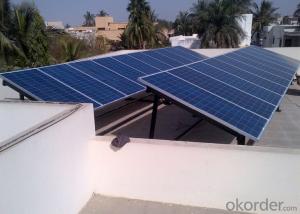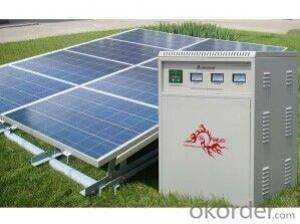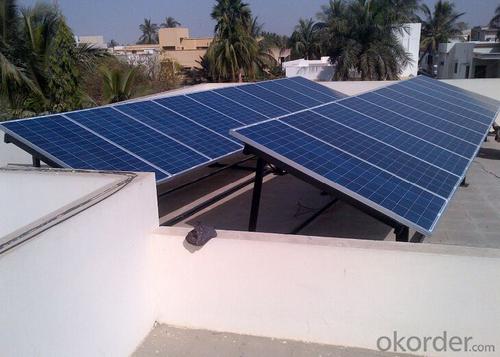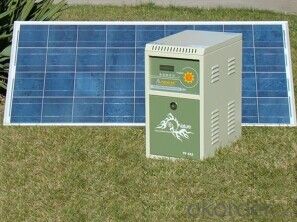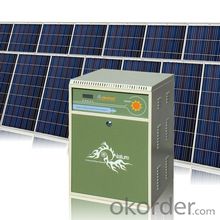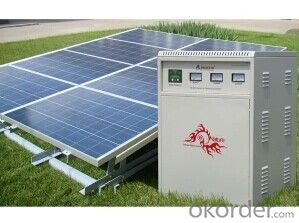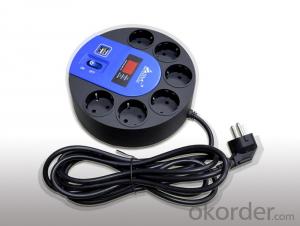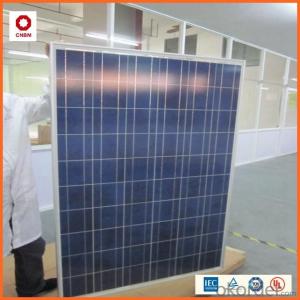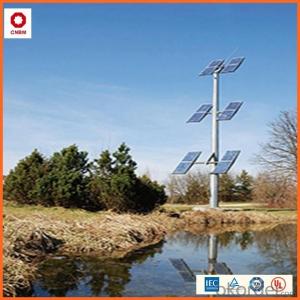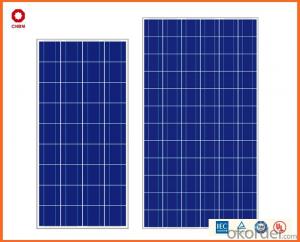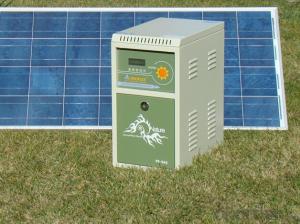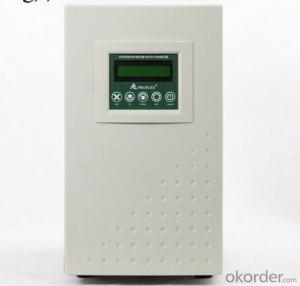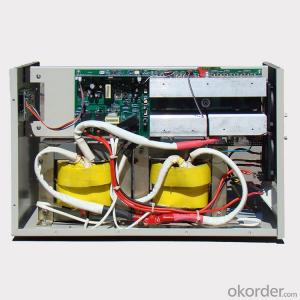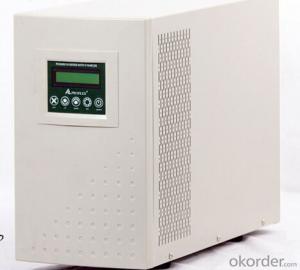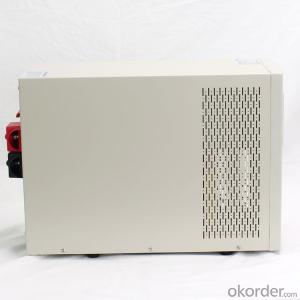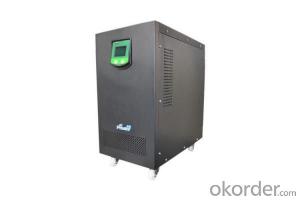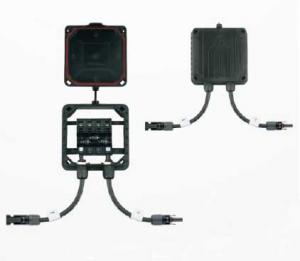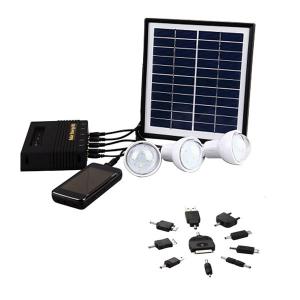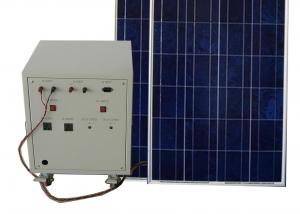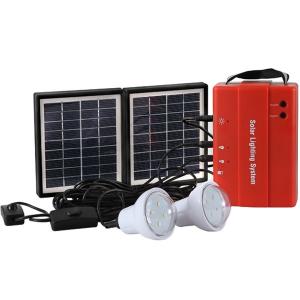Solar Energy Systems Alaska - Off Grid Solar Power System PR-SAS500 with Battery Tank 400W
- Loading Port:
- Tianjin
- Payment Terms:
- TT OR LC
- Min Order Qty:
- 10 pc
- Supply Capability:
- 10000 pc/month
OKorder Service Pledge
OKorder Financial Service
You Might Also Like
Specification
Specifications
1.Supply 2 work modes: to save electricity bill or to supply long time power backup.
2. Supply battery tank,high integrated.
Daily use reference
TV 70W x 4 hours
Lighting 30W x 6 hours
Fan 50W x 6 hours
Laptop 60W x 2 hours
Total loading power: 210W
Total power consumption per day: 880Wh (0.88kWh/day)
AC solar power system consists of solar batteries, solar controller, battery, inverter components.
Used to solve rural or remote areas without electricity, such as highland, island, pastoral, villas, border posts and other military and civilian life electricity.
Warranty
CNBM Solar panel provides one of the most comprehensive module warranties in the industry:
· 10 years for product defects in materials and workmanship
· First 12 years for 90% of warranted minimum power
· Remaining 25 years for 80% of warranted minimum power
Certification
CNBM Solar panel strictly carries out the ISO 9001 quality control methodology and has implemented check points at every step of the production process to ensure our product performance durability and safety. The stringent quality control process has been confirmed by numerous independent agencies and LDK Solar modules earned IEC, TUV and UL certifications.
· IEC:IEC 61215, IEC 61730 (1&2), conformity to CE
· UL 1703 2002/03/15 Ed:3 Rev:2004/06/30
· ULC/ORD-C1703-01 Second Edition 2001/01/01
· UL and Canadian Standard for Safety Flat-Plate
· ISO 9001: 2008 Quality Management Systems
· CEC Listed: Modules are eligible for California Rebates
· PV Cycle: Voluntary module take back and recycling program
· MCS Certificate
FAQ
l Where can I buy your products?
You could find our products from dealers or contact our sales team directly. We will provide you with detailed services.
l How to contact us?
Contact details can be found from website www.okorder.com to contact us. We look forward to providing you with professional services.
l What is the application field of your products?
They can be used in the small photovoltaic (PV) grid power generation systems of family units as well as the commercial photovoltaic system such as BIPV, BAPV and etc.
l What kinds of modules do your inventers support?
Our inventers support most of mainstream components and modules in the market. Should you require more details, please do not hesitate to contact our technical personnel.
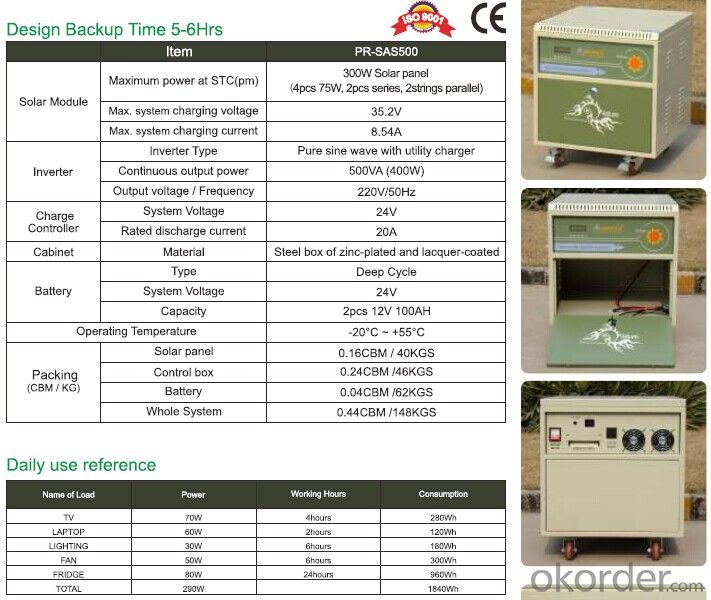

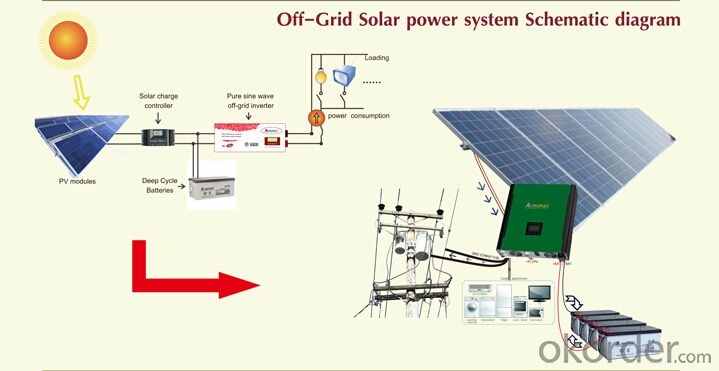
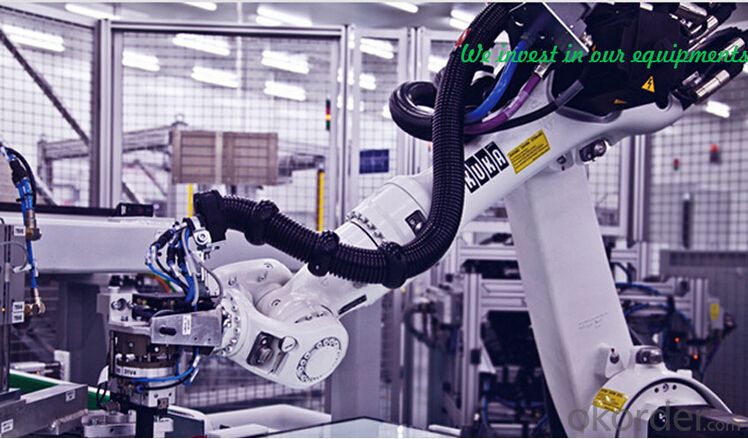
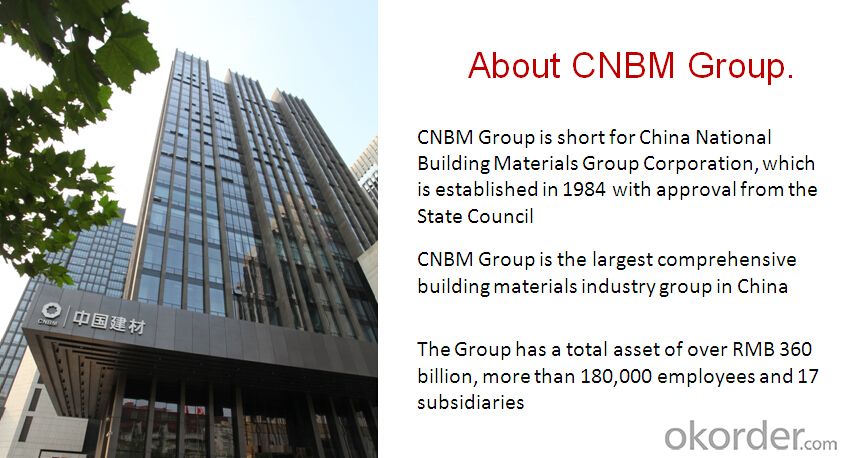
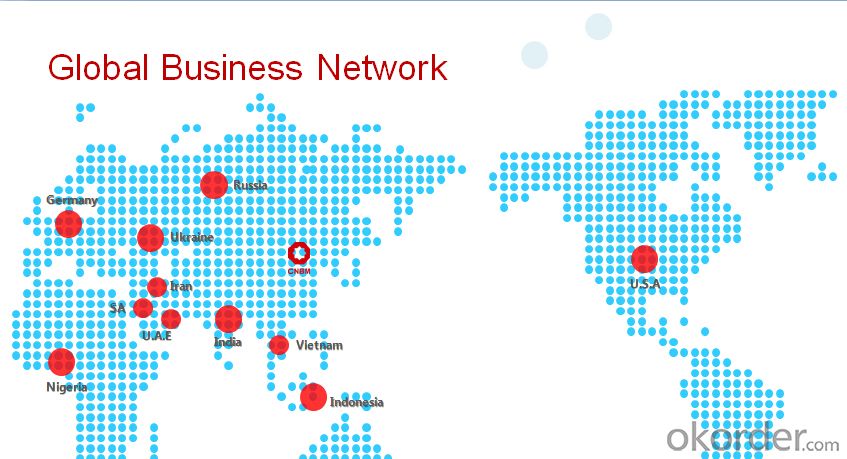
- Q: Can solar energy systems be used in developing countries without access to reliable electricity?
- Yes, solar energy systems can be used in developing countries without access to reliable electricity. Solar energy is a viable and sustainable solution for these regions as it provides a decentralized source of power that is not dependent on a centralized electrical grid. Solar panels can be installed to capture sunlight and convert it into electricity, providing clean and renewable energy for various purposes such as lighting, cooking, and powering small appliances. These systems can help improve the quality of life, promote economic growth, and reduce reliance on fossil fuels in developing countries with limited access to reliable electricity.
- Q: How much space is needed to install a solar energy system?
- The amount of space required for installing a solar energy system varies based on several factors such as the capacity of the system, the type of solar panels used, and the available sunlight. On average, for residential installations, a solar energy system typically requires around 100-400 square feet of roof space per kilowatt (kW) of solar capacity. However, ground-mounted systems can require more space, especially for larger installations. It is essential to conduct a site evaluation to determine the specific space requirements for a solar energy system.
- Q: Are there any noise or sound issues with solar energy systems?
- Solar energy systems generally do not produce noise or sound issues. Unlike traditional energy sources such as fossil fuel power plants or wind turbines, solar panels do not have any moving parts that generate noise. Solar panels simply convert sunlight into electricity through photovoltaic cells, which is a silent process. The only potential sound issue with solar energy systems could arise from the inverters, which convert the direct current (DC) produced by the panels into alternating current (AC) for use in homes or businesses. However, modern inverters are designed to operate silently or emit minimal noise levels, often comparable to the background hum of household appliances. Hence, noise or sound issues are generally not a concern when it comes to solar energy systems.
- Q: Can solar energy systems be used in areas with limited space for ground-mounted installations?
- Yes, solar energy systems can be used in areas with limited space for ground-mounted installations. In such cases, alternative options like rooftop solar panels or solar canopies can be utilized to maximize the use of available space and still harness solar energy effectively.
- Q: Can solar energy systems be used in areas with limited roof access for maintenance?
- Yes, solar energy systems can be used in areas with limited roof access for maintenance. In such cases, alternative mounting options like ground-mounted systems or solar canopies can be utilized, allowing for easier access and maintenance of the solar panels. These alternative solutions ensure that solar energy can still be harnessed effectively in areas where roof access is limited.
- Q: How does the presence of birds or other wildlife affect the performance of solar panels?
- Solar panels may be affected by the presence of birds or other wildlife in various ways. One of the primary concerns is the potential for bird droppings to accumulate on the panel's surface. This can lead to a layer of dirt and debris, reducing the amount of sunlight that can reach the solar cells. Consequently, the efficiency of the panels may decrease, resulting in a decline in overall performance. Another issue arises from the possibility of birds or other wildlife building nests or habitats near or on the solar panel systems. These nests can obstruct the sunlight from reaching the panels, leading to a decrease in energy production. Moreover, if these nests are constructed in close proximity to the panels, they can potentially cause damage to the panels or their mounting structures. Furthermore, larger birds such as raptors or pigeons may occasionally perch on the solar panels, causing physical harm to the panels or the wiring. This can result in malfunctions or a reduction in electrical output. To address these potential issues, there are several available solutions. One common approach involves using deterrents like bird spikes, netting, or scare devices to prevent birds from landing or nesting on the panels. Regular cleaning and maintenance of the panels are also crucial to eliminate any bird droppings or debris that may accumulate. Additionally, designing solar panel systems with bird-friendly features in mind can help minimize the impact on wildlife. For instance, incorporating gaps or spaces between panels can discourage birds from nesting while still allowing sufficient airflow for cooling. In conclusion, although the presence of birds or other wildlife may pose challenges for solar panels, implementing preventive measures and maintenance practices can help ensure optimal performance and prolong the system's lifespan.
- Q: Can solar energy systems be used for powering electric vehicle solar charging roads?
- Solar energy systems have the capability to power electric vehicle solar charging roads. To accomplish this, solar panels can be installed either alongside or on top of the charging roads in order to capture and convert energy from the sun into electricity. This electricity can then be utilized to operate the charging infrastructure for electric vehicles, enabling them to charge their batteries while in motion. Furthermore, any surplus energy generated by the solar panels can be stored in batteries or returned to the grid, ensuring a consistent and sustainable power supply for the charging infrastructure. By combining solar energy with electric vehicle charging roads, the reliance on fossil fuels can be reduced and the utilization of renewable energy can be encouraged within the transportation industry.
- Q: Can a solar energy system be financed through a loan?
- Yes, a solar energy system can be financed through a loan. Many financial institutions and government programs offer loans specifically for solar panel installation. These loans allow homeowners and businesses to spread out the cost of the solar system over a period of time while still reaping the benefits of renewable energy.
- Q: Can solar energy systems be combined with energy storage technologies like batteries?
- Yes, solar energy systems can be combined with energy storage technologies like batteries. This combination allows for the storage of excess solar energy generated during the day, which can be used during times when the solar panels are not producing enough energy, such as at night or during cloudy weather. Energy storage technologies like batteries help in optimizing the use of solar energy and ensure a more consistent and reliable power supply.
- Q: How does a solar energy system convert sunlight into electricity?
- Through a process known as the photovoltaic effect, sunlight is transformed into electricity by a solar energy system. This effect takes place within solar panels, which are composed of numerous silicon cells. When sunlight makes contact with the solar panels, it is assimilated by the silicon cells, which act as semiconductors. The energy derived from the sunlight stimulates the electrons within the silicon atoms, causing them to detach from their atomic bonds and generate an electric current. This electric current adopts the form of direct current (DC), which is not suitable for most household appliances. Consequently, an inverter is employed to convert the DC electricity into alternating current (AC), the standard type of electricity utilized in homes and businesses. The AC electricity produced by the solar energy system can subsequently be utilized to power various appliances and devices within a building. Should the system generate an excess of electricity beyond current usage, it can be stored in batteries for future usage or returned to the grid through a process known as net metering. To summarize, the conversion of sunlight into electricity is achieved by solar energy systems utilizing solar panels to assimilate sunlight and generate an electric current through the photovoltaic effect. This current is subsequently converted from DC to AC and can be utilized to power buildings or stored for future use.
Send your message to us
Solar Energy Systems Alaska - Off Grid Solar Power System PR-SAS500 with Battery Tank 400W
- Loading Port:
- Tianjin
- Payment Terms:
- TT OR LC
- Min Order Qty:
- 10 pc
- Supply Capability:
- 10000 pc/month
OKorder Service Pledge
OKorder Financial Service
Similar products
Hot products
Hot Searches
Related keywords
